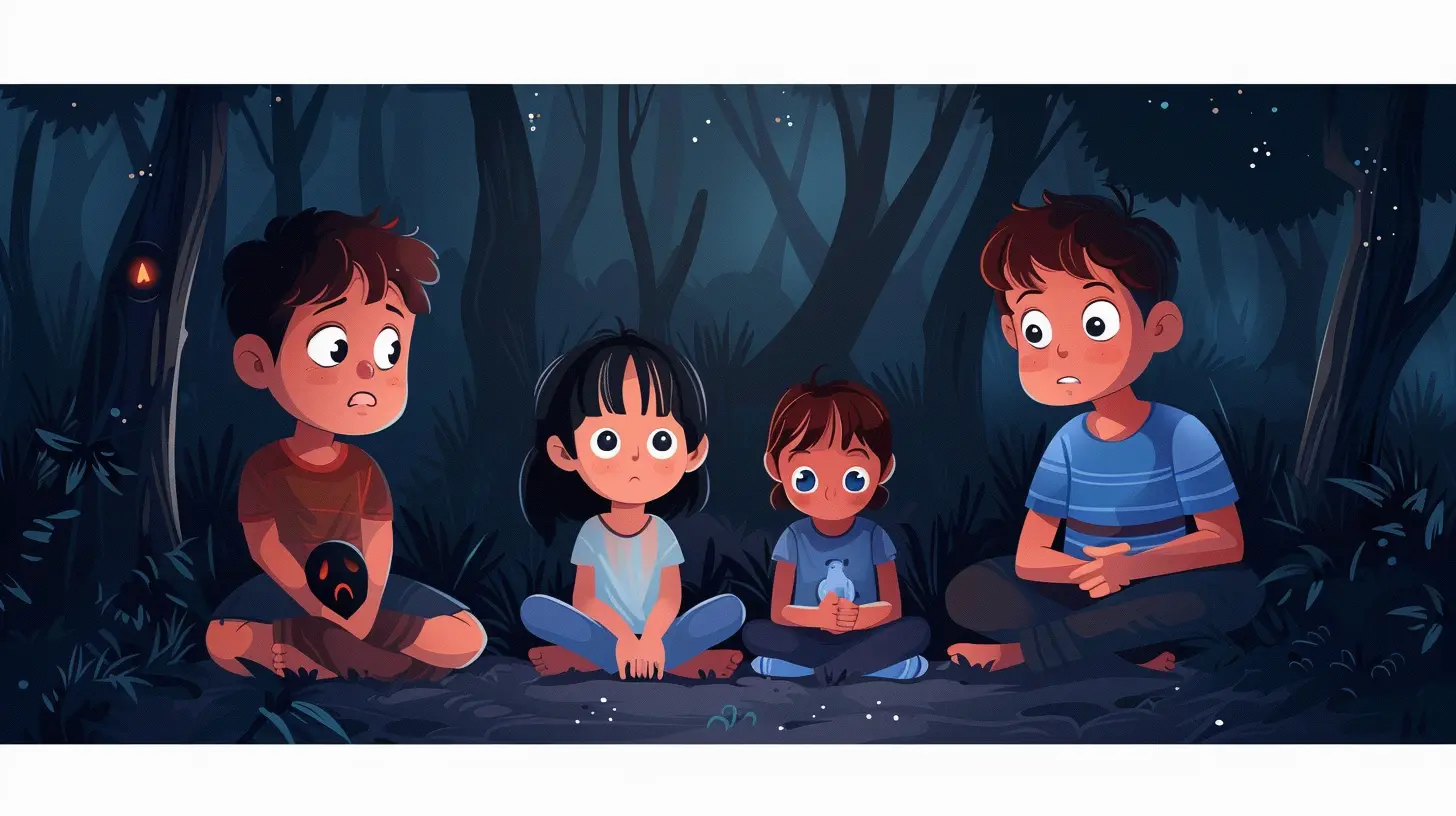Coping Mechanisms for Children with Separation Anxiety Disorder
20 November 2025
Separation anxiety in kids isn’t just a case of the “back-to-school blues” or a few tears at daycare drop-off. For children grappling with Separation Anxiety Disorder (SAD), those moments can feel like a tidal wave of fear and distress. Think about it — what if every time someone you loved left the room, your brain screamed, “They might never come back!” That’s the emotional rollercoaster some children ride daily.
This article dives deep into the nature of Separation Anxiety Disorder, what it looks like, what causes it, and most importantly, the practical coping strategies that can help both children and their caregivers find some peace of mind.

What is Separation Anxiety Disorder?
Let’s start with the basics. It’s normal for young kids to get clingy. Infants cry when mom or dad disappears, and toddlers may pitch a fit at daycare drop-off. But when anxiety about separation becomes extreme, ongoing, and interferes with everyday life, it may point to Separation Anxiety Disorder.SAD isn't just shyness or being a little worried. It’s a recognized mental health condition that affects roughly 4% of children. It typically appears around ages 7 to 9, but can also emerge earlier or in the teenage years.
Key symptoms of SAD include:
- Excessive fear of being away from primary caregivers- Nightmares about separation
- Physical symptoms like headaches or stomachaches when separation is anticipated
- Reluctance or refusal to go to school or sleep alone
- Constant worry that something bad will happen to a loved one
Sound familiar? If so, don’t panic. You're not alone, and there are effective ways to help.
Why Does Separation Anxiety Happen?
It’s a complex mix — kind of like baking a cake where you don’t quite know the exact recipe. Yep, there’s no single cause, but rather a blend of genetic, environmental, and even situational ingredients.A few common factors include:
- Family history of anxiety: If a parent has struggled with anxiety, a child may be more prone to it too.- Stressful events: Things like divorce, moving, changing schools, or losing a loved one can trigger SAD.
- Parental behavior: Overprotectiveness (though rooted in love!) can unintentionally reinforce a child’s fears.
- Insecure attachment styles: When children haven’t had consistent or responsive care, they may struggle more with separation.
Understanding the “why” isn’t about pointing fingers — it’s about creating a roadmap for healing.
How To Identify SAD (Without Jumping to Conclusions)
Before we dive into tools and tactics, let’s be sure we’re talking about SAD and not just a developmental phase.Every child shows distress at separation from time to time. But if the anxiety:
- Lasts for at least four weeks
- Is developmentally inappropriate
- Causes significant distress or impacts school, social life, or family dynamics
…it’s time to consider speaking with a pediatrician or a child psychologist.
Coping Mechanisms for Children with Separation Anxiety Disorder
Now for the heart of it. Helping a child manage SAD isn’t about snapping fingers or offering empty reassurances. It's about consistent, intentional support.1. Establish Predictable Routines
Children thrive on routine. When life feels predictable, it feels safe. Create simple, consistent rituals around goodbyes — whether it’s a secret handshake, a goodbye song, or a hug routine.It’s like giving their anxious brain a roadmap. Over time, routines help build trust that “goodbyes” always come with “hellos” eventually.
2. Practice Short Separations (With Positivity)
Start small. Leave for a brief period while your child is engaged in a comfortable activity. Return when you say you will.Begin with minutes, then stretch to hours. Think of it as training wheels — you’re helping them build confidence step by step. Celebrate successful separations (but don’t overdo it), reinforcing the safety of the experience.
3. Communicate Openly — But Keep It Simple
Kids are like emotional sponges. If they sense you’re worried or sad about leaving them, they’ll soak that up.Speak calmly and confidently. Let them know it’s okay to feel nervous, but reassure them of your return. Phrases like, “I know it’s hard to say goodbye, but I’ll be back right after snack time,” can be grounding.
Avoid long explanations or reassurances. Too much talking can sometimes feed the anxiety monster.
4. Give Them Tools to Cope
Empower your child with simple techniques:- Deep breathing: Teach “bubble breathing” — inhale slowly, pretend to blow a big bubble, exhale gently.
- Visualization: Ask them to imagine a “safe place” in their mind.
- Transitional objects: A small keepsake — like a locket with your picture or a stuffed animal — can provide reassurance.
These aren’t just cute ideas. They help rewire the brain to handle stress more effectively.
5. Avoid Sneaking Away
Even though it might feel easier in the moment, slipping out while your child’s distracted can actually worsen anxiety in the long run. It sends a confusing message — and may make your child cling even harder next time.Instead, say a quick, confident goodbye and leave calmly, even if there are tears.
6. Reward Brave Behavior (Not Avoidance)
Reinforce moments when they try — not just when they succeed.Did they walk into class with only a few tears? High-five. Did they sleep alone for the first time? That’s reward-worthy.
But don’t accidentally reward avoidance. Letting them stay home every time they get upset only teaches the brain that avoiding fears is the solution — and that keeps anxiety stuck on a loop.
7. Stay Calm — Even When It's Hard
This one’s for you, parents. Watching your child in distress? Brutal. But your calm presence is a game-changer.Model the behavior you want them to learn. Talk about your own feelings: “I miss you too when I go to work, but I know we’ll both be okay, and I am proud of you.”
Kids learn tons through observation. Be the safe harbor they come back to after weathering the storm.
8. Encourage Social Interaction and Independence
Help your child engage in social activities, even in small doses. Playdates, classes, or hobby groups can foster independence and confidence.And celebrate their autonomy! Let them choose their clothes, pack their backpack, or help make breakfast. Small wins build big confidence over time.
9. Consider Professional Help
If SAD is severely impacting daily life, don’t hesitate to seek support. Licensed child therapists, especially those trained in cognitive-behavioral therapy (CBT), can guide your child through anxiety in an empowering, structured way.CBT helps kids learn to identify anxious thoughts, challenge them, and replace them with more realistic, calming ones. It’s like giving their brain a toolkit for tough moments.
Medication is rarely the first step in young children, but in severe cases, a psychiatrist might consider it as part of a comprehensive treatment plan.
10. Take Care of Yourself Too
Let’s be real — parenting an anxious child can leave you feeling wiped out, helpless, or anxious yourself. Your mental health matters, too.Connect with other parents, consider therapy for yourself if needed, and get support. When you’re regulated, you can better co-regulate your child.
It’s like putting on your oxygen mask first — it’s not selfish; it’s essential for helping your child breathe easier.
Long-Term Outlook: Will They Grow Out of It?
Here’s the good news: with the right support and strategies, most children with SAD do improve over time.It’s not about “curing” anxiety — it’s about teaching your child to navigate it like a boss. With patience, consistency, and compassion, your child can absolutely learn how to manage their fears and flourish.
And the best part? These coping skills will serve them not just now, but through every chapter of life.
Final Thoughts: Progress Over Perfection
Look, no parenting manual truly prepares you for this stuff. Watching your child suffer can leave you feeling like you're fumbling in the dark. But trust me — the fact that you're here reading this means you care deeply, and that matters more than you know.These coping mechanisms aren’t magic spells. There will be setbacks. There will be tears. But there will also be victories — maybe small at first, but mighty in their meaning.
Hang in there. You’ve got this. And so does your child.
all images in this post were generated using AI tools
Category:
Psychological Disorders In ChildAuthor:

Eliana Burton

